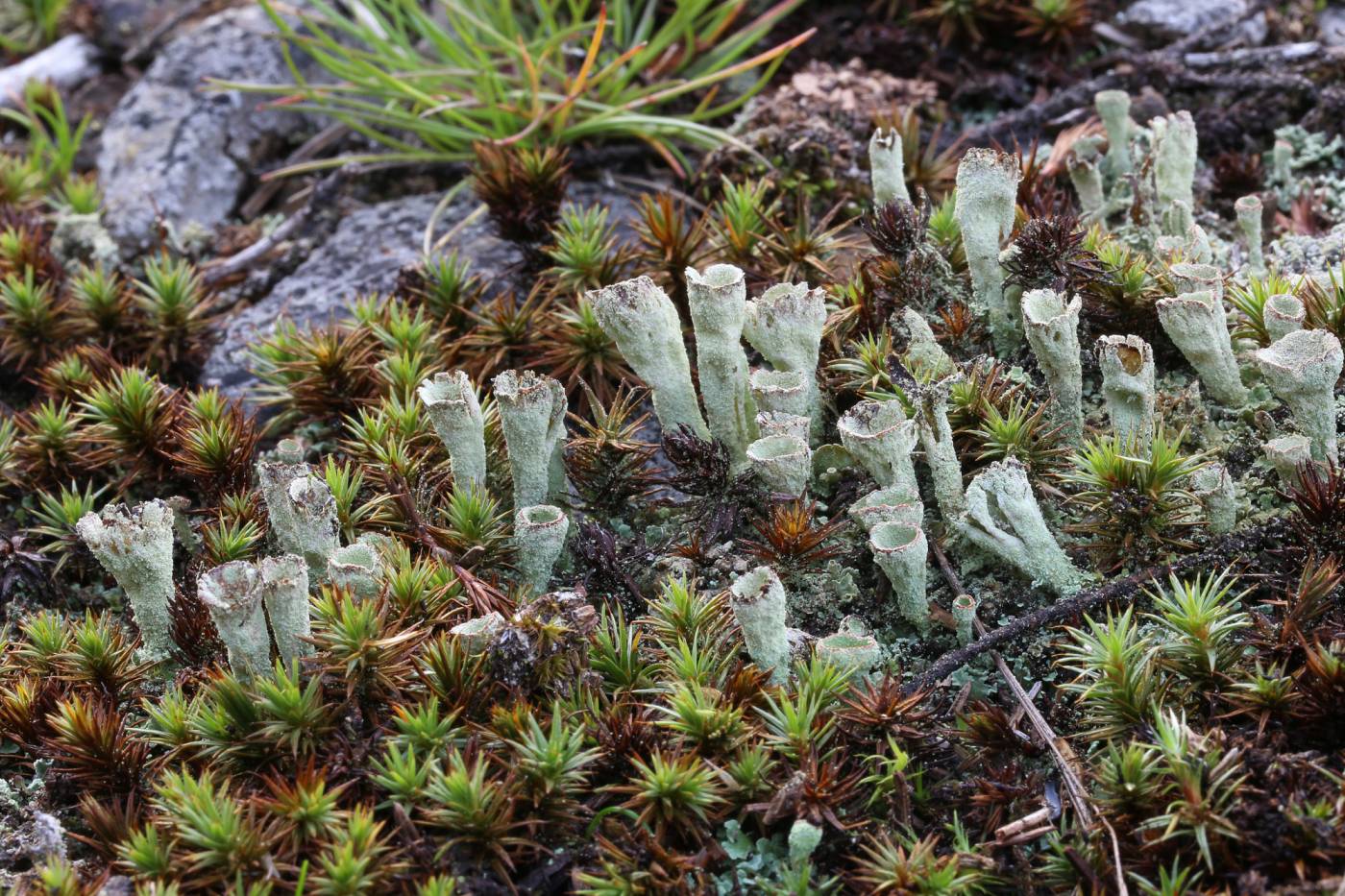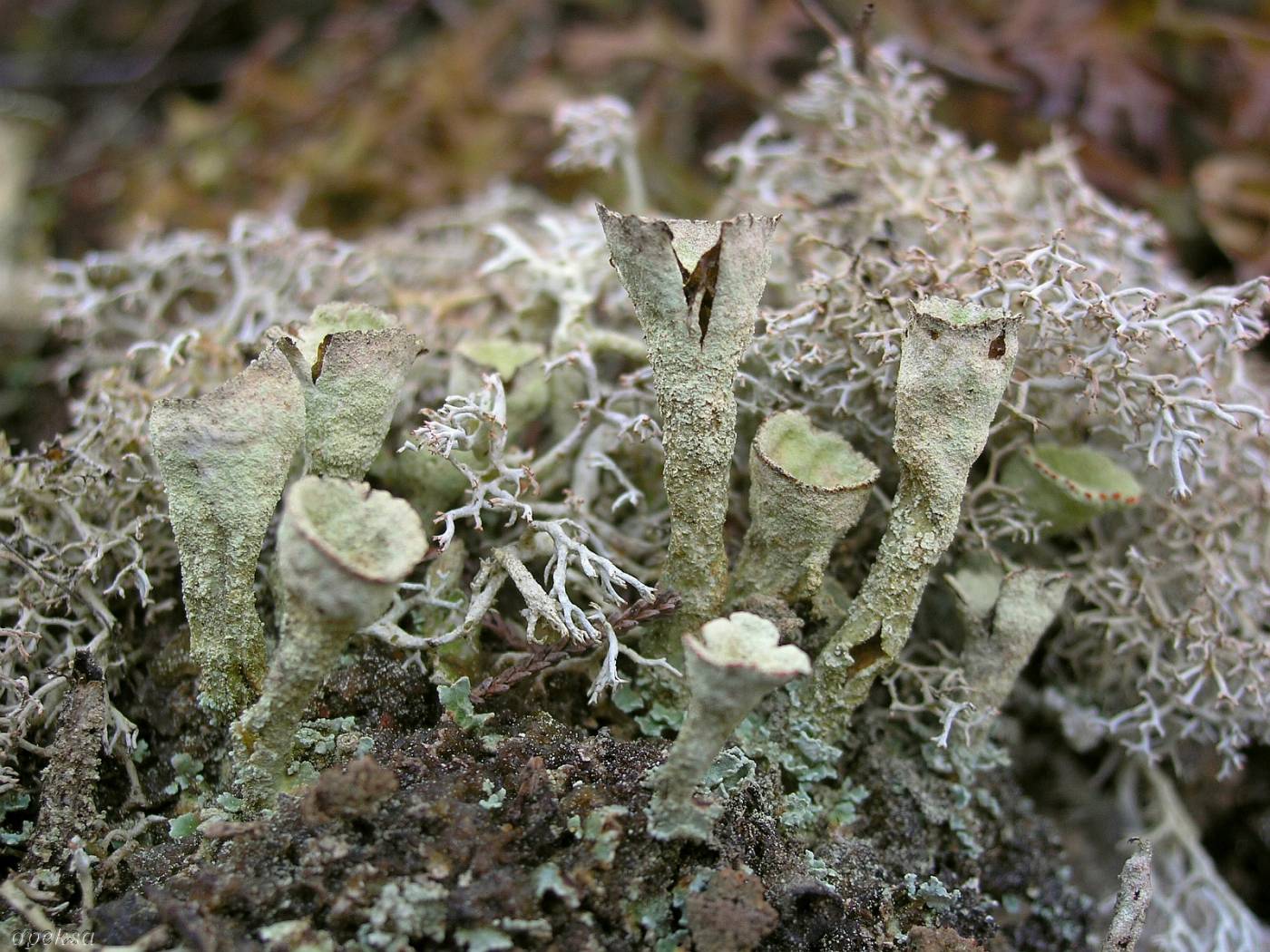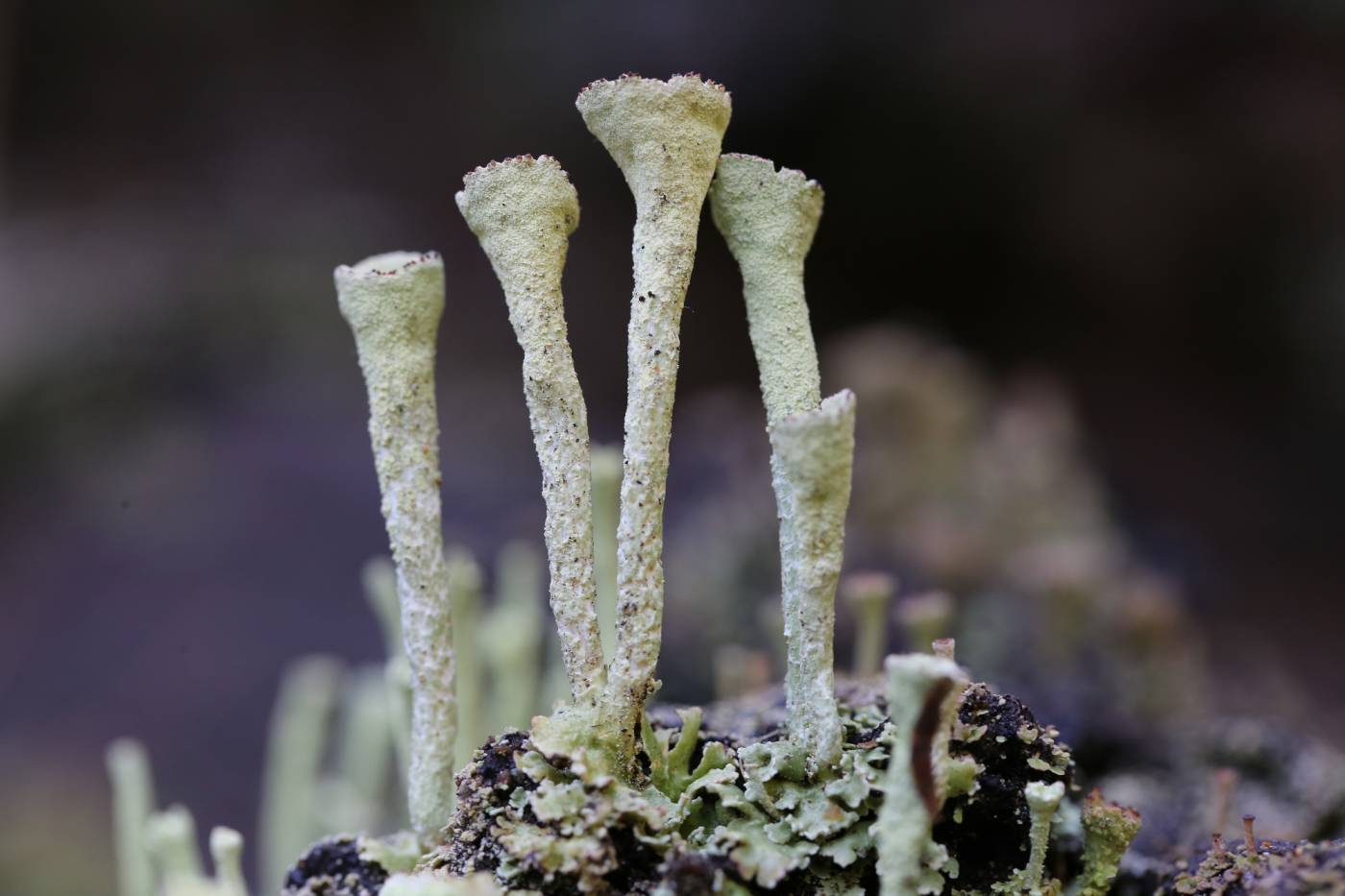The podetia of C. deformis are yellowish, farinose-sorediate, trumpet-shaped and form red apothecia and pycnidia on scyphus margins. Robust morphotypes may resemble C. sulphurina, whose podetia are usually cracked and contain squamatic acid (UV+ white). Based on genetic markers, it is indistinguishable from the similar C. pleurota (Steinová et al. 2013), which has lower podetia and is more coarsely sorediate.
The species typically grows on humus, peat, acidic soil and decaying wood but has also been recorded on mossy rocks. Its distribution area is more or less arctic-boreal-montane. In Europe, it is quite common, mainly in the northern and mountain areas, but rare in the western and southern parts of the continent. In the Czech Republic, C. deformis is quite abundant at higher elevations where it mainly grows in open coniferous forests, on boulder screes and peatbogs. In open stands with suitable microclimate and substrates, it may grow even at lower elevations.
Literature: Steinová J., Stenroos S., Grube M. & Škaloud P. (2013): Genetic diversity and species delimitation of the zeorin-containing red-fruited Cladonia species (lichenized Ascomycota) assessed with ITS rDNA and β-tubulin data. – Lichenologist 45: 665–684.
taxonomic classification:Ascomycota → Lecanoromycetes → Lecanorales → Cladoniaceae → Cladonia
Red List (Liška & Palice 2010):NT – near threatened
Occurrence in the Czech Republic
All records: 362, confirmed 234. One click on a selected square displays particular record(s), including their source(s).





